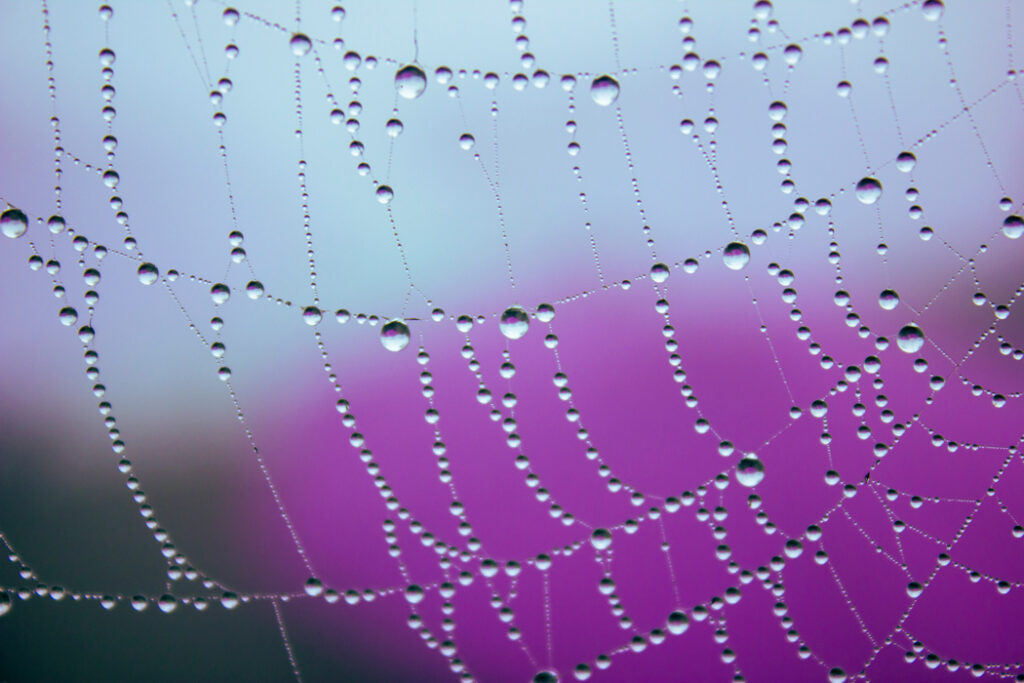
For a moment, picture a world in which industrial activities are seamlessly integrated with the natural environment. In this world, cities would sequester carbon for years, just like expansive urban forests. Buildings would heal themselves like living tissues, their windows nearly unbreakable. And plastics would decompose to nourish ecosystems, instead of sitting in landfills.
Is this imaginary world possible? Actually, these are all real innovations that are being implemented at this very moment.
Many challenges humanity has grappled with have already been solved by nature. With millions of years of tinkering, evolution has given rise to photosynthesis, flight, sonar, antibiotics, and countless other useful functions. It’s therefore no surprise that nature is already a master of sustainability, with ecosystems that recycle everything and organisms that have adapted for highly efficient resource use.
Tapping this wealth of biological intelligence for human applications is the goal of biomimicry, a practice as old as the human species. Many notable successes are popping up in the engineering of materials like concrete, glass, and plastic. By drawing inspiration from nature, it becomes possible to address previously daunting problems in ways that benefit our planet.
Self-Healing Concrete
Concrete is the most popular construction material globally, and the cement used in concrete is a significant contributor to climate change.1 We produce more than 4 billion tons of cement yearly, amounting to 8 percent of all CO2 emissions. Seeking to reduce carbon emissions from cement production, researchers turned to the natural world, where carbon is regularly utilized in durable materials like shells, bones, and tree trunks for enhanced structural integrity. This connection to biology ultimately led to the development of carbonation curing, an effective method for sequestering carbon in concrete mixtures. Beyond reducing emissions, this process alters the concrete’s microstructure, resulting in enhanced strength and durability.2
Using a durable material like concrete to sequester carbon is ideal because it lasts so long. Still, researchers have been employing concepts from biomimicry to make it last even longer. Inspired by the healing process of bone, self-healing concrete can be made with the help of special bacteria. Within the concrete, bacteria are embedded in capsules with calcium lactate. As the concrete cracks, incoming moisture and air spur the bacteria to convert the calcium lactate into limestone, sealing up the crack.3
Seashell-Inspired Glass
The strength and resilience of nacre, the shimmering substance found in certain seashells, arises from its unique composition: delicate mineral fragments adhered together in layers by flexible proteins. Drawing inspiration from this natural phenomenon, scientists have applied a similar concept to create an exceptionally durable glass composite.4 This material has the potential to revolutionize the manufacturing of smartphone screens, windshields, and other products currently reliant on treated glass, offering remarkable strength and resistance to breakage. The glass is reportedly four times stronger and nearly seven times more damage-resistant than the glass of a car windshield.
Vegan Spider Silk
Spider silk is one of the strongest materials in nature. Each strand is composed of thousands of microstrands, giving the material several times the strength of steel. In 2021, researchers discovered a new method of assembling plant proteins, creating a film that mimics spider silk on a molecular level and offering a sustainable alternative to single-use plastics.5 The product, now commercialized by Xampla, is energy-efficient to produce, made with sustainable materials, and home compostable.
Material Ecology
The sustainability issues and technological challenges we face today are, in part, a consequence of the notion that humans exist apart from nature. As a result, we’ve devised technological solutions that are both inefficient and unsustainable. For this to change, we can avoid “reinventing the wheel” by implementing solutions that nature has already devised through biomimicry. We can also move beyond viewing materials as static end-products into an understanding of how they dynamically interact with the world. In 2009, the designer Neri Oxman defined this new understanding as “material ecology,” the study of how the materials we use interact with the broader environment.
From self-healing concrete to seashell-inspired glass and vegan spider silk, innovations like these exemplify the strengths of biomimicry and material ecology. By recognizing the common goals we share with nature, we can enact truly effective and sustainable progress.
- “Making Concrete Change,” 2018, Chatham House Report
- Kazemian, M. & Shafei, B., Carbon sequestration and storage in concrete, 2023, Journal of CO2 Utilization
- Matchar, E., “With This Self-Healing Concrete, Buildings Repair Themselves,” 2015, Smithsonian Magazine
- Bushwick, S., “Seashells Inspire New Superstrong Glass Composite,” 2021, Scientific American
- “Vegan spider silk provides sustainable alternative to single-use plastics,” 2021, University of Cambridge
